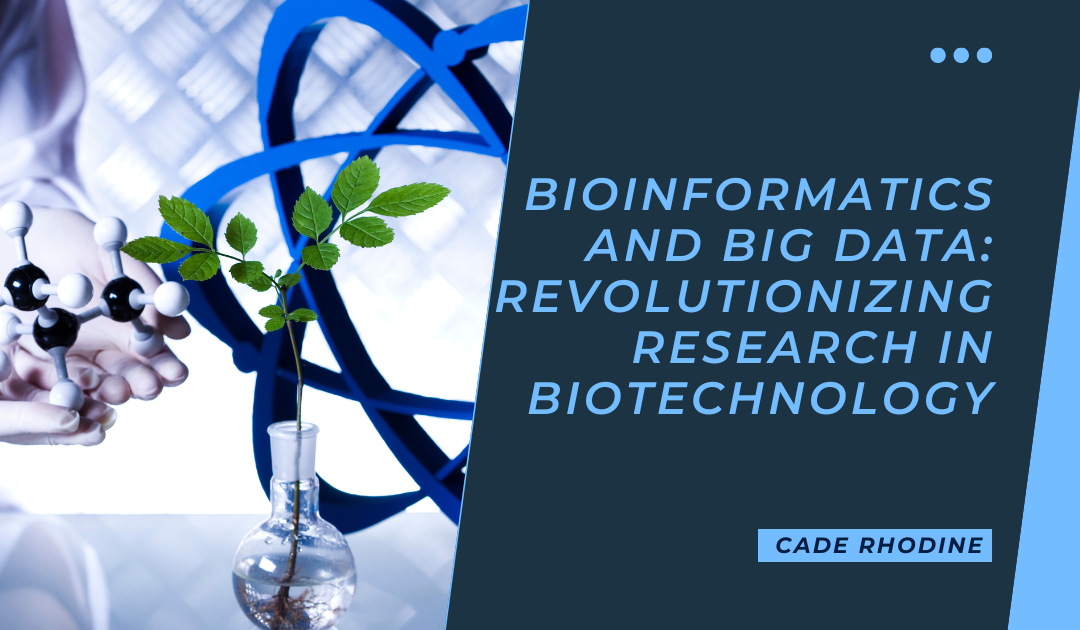The intersection of bioinformatics and big data is dramatically transforming the landscape of biotechnology. As biological research generates increasingly vast and complex datasets, the ability to analyze, interpret, and apply this information has become crucial. Bioinformatics—defined as the application of computational tools to manage and analyze biological data—has emerged as a central player in this data-driven revolution.
At the core of bioinformatics lies the analysis of genetic sequences. With the advent of next-generation sequencing (NGS) technologies, it’s now possible to sequence entire genomes in hours, producing terabytes of data. Bioinformatics tools are essential for assembling these sequences, identifying genes, detecting mutations, and comparing genomes across species. Such capabilities have been instrumental in fields ranging from evolutionary biology to personalized medicine.
Big data analytics amplifies the power of bioinformatics by enabling the extraction of meaningful patterns from massive datasets. In biotechnology research, this means identifying gene expression profiles linked to diseases, understanding protein interactions, and even predicting the efficacy of drugs. Machine learning algorithms, a subset of artificial intelligence, are being employed to uncover associations that traditional statistical methods might overlook. These models can predict disease risk, suggest novel drug targets, and even simulate cellular behaviors.
One of the most significant applications of bioinformatics and big data is in precision medicine. By analyzing a patient’s genetic makeup alongside environmental and lifestyle data, researchers can tailor treatments to individual needs. For example, in cancer research, bioinformatic tools can identify specific mutations driving tumor growth. This information guides the development of targeted therapies that are more effective and less harmful than traditional chemotherapy.
Drug discovery is another area where the synergy between bioinformatics and big data is accelerating innovation. Traditionally, drug development is a time-consuming and expensive process. But with bioinformatics, researchers can use virtual screening methods to predict how new compounds will interact with biological targets. Massive chemical and genomic databases feed into these models, helping to identify promising candidates more quickly and at lower cost.
Moreover, the integration of multi-omics data—combining genomics, proteomics, transcriptomics, and metabolomics—has become a cornerstone of modern biotechnology. Bioinformatics platforms are designed to handle and analyze this diverse data, offering a comprehensive view of biological systems. Such integration enables researchers to move beyond a single layer of information and understand the full complexity of life processes.
Agricultural biotechnology is also reaping the benefits of bioinformatics and big data. By studying the genetic traits of crops, researchers can develop varieties that are more resistant to disease, require less water, or yield higher nutritional value. Bioinformatic tools enable the identification of desirable traits, assist in marker-assisted selection, and even support genome editing through CRISPR-based technologies.
Epidemiology and public health are additional fields undergoing transformation. During the COVID-19 pandemic, bioinformatics was pivotal in tracking viral mutations, predicting outbreak trends, and informing vaccine development. Real-time data analytics helped health agencies make faster, evidence-based decisions, demonstrating the power of these technologies in managing global health crises.
As the volume of biological data continues to grow, so too does the need for scalable, efficient data storage and processing solutions. Cloud computing has become an indispensable ally, allowing researchers to access high-performance computing resources without the need for costly infrastructure. Bioinformatics platforms hosted in the cloud facilitate collaboration across institutions and enable global sharing of datasets, accelerating the pace of discovery.
Despite the immense potential, challenges remain. Data privacy, especially concerning human genetic information, is a critical concern. Researchers and policymakers must establish robust frameworks to ensure ethical data usage and protect individual rights. Additionally, the field requires ongoing investment in education and training to produce a workforce equipped to handle the computational and biological complexities involved.
The fusion of bioinformatics and big data is not merely an enhancement of traditional research—it’s a paradigm shift. It enables scientists to ask deeper questions, find answers faster, and develop solutions that were once thought impossible. As biotechnology continues to push boundaries, bioinformatics will remain at the heart of innovation, driving breakthroughs that improve lives, protect ecosystems, and redefine our understanding of biology itself.

